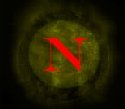 Although Delftware is commonly identified with The Netherlands, the truth is that the original patterns and for that matter the original potters were not natives to Holland. In the 16th century, Italian potters immigrated to Belgium and then later moved to on to Rotterdam. By the mid 17th century, the town of Delft was firmly established as a pottery center and at one time they had more than 100 pottery factories. The Konninklije Porceleyne Fles factory was founded in 1653 and still stands today. The name of the factory actually translates to “The Porcelain Bottle” and refers to the Royal Delft trademark.
Although Delftware is commonly identified with The Netherlands, the truth is that the original patterns and for that matter the original potters were not natives to Holland. In the 16th century, Italian potters immigrated to Belgium and then later moved to on to Rotterdam. By the mid 17th century, the town of Delft was firmly established as a pottery center and at one time they had more than 100 pottery factories. The Konninklije Porceleyne Fles factory was founded in 1653 and still stands today. The name of the factory actually translates to “The Porcelain Bottle” and refers to the Royal Delft trademark.The Artisans who work on the Royal Delftware must train for at least one year before they are allowed to work on their own. The Artisans use brushes made with hair of squirrels. The cobalt blue paint actually starts out as black with a cobalt oxide added. The cobalt oxide turns a rich cobalt blue during the firing process. The addition of water determines the shades of cobalt. Most of the scenes and or patterns on the Delftware are Dutch in nature. There are many
 copies of the famous Delft patterns, by the Chinese and Europeans, but none is as beautiful as a piece of the hand painted Royal Delftware Pottery.
copies of the famous Delft patterns, by the Chinese and Europeans, but none is as beautiful as a piece of the hand painted Royal Delftware Pottery.The Royal Delftware bowl pictured to the right was a real steal at the Salvation Army Thrift Store in Manassas, Virginia. It was late sold on eBay to a very eager buyer.



No comments:
Post a Comment